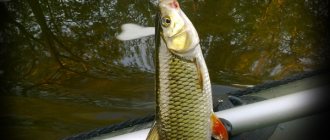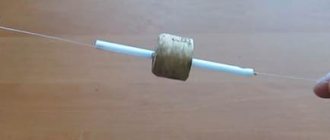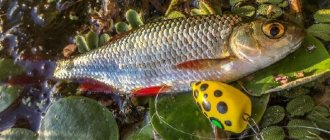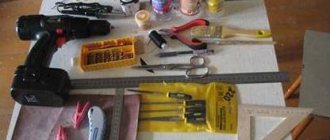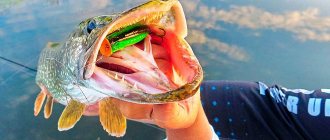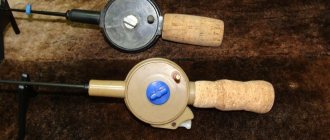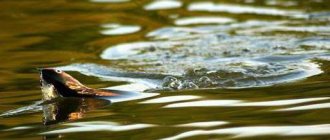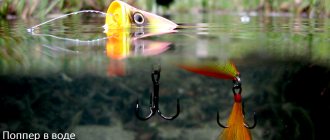How to properly plant a cockchafer
In principle, everything can be seen from the picture. The cockchafer is pierced in the chest, and the sting is brought out just above the “butt”.
Select a hook according to the size of the beetle. It is not necessary that it comes out in exactly the same place as in the picture. A slight deviation is quite acceptable.
You should not plant the hook deep into the beetle; it is better to keep it alive for additional play. Try to swipe as close to the edge as possible.
If you have problems with the flight of the beetle when casting =), you can tear off 1 wing. One thing is better, it definitely won’t take off, but it will create more vibrations on the water.
There are several other ways to attach a beetle to a chub, and to other fish as well. Suitable for single skating.
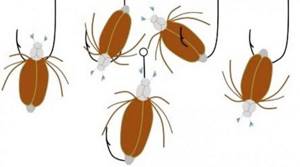
How to equip a cockchafer with a tee for a chub
It’s a little more complicated here, but the probability of a notch is much greater. The photo shows an artificial one, but the principle of what should happen is clear.

What does that require. Take the tee itself and tie a fishing line of 0.15 mm and higher to it. Leave a free end, about 20 cm will be comfortable. Tie a needle through the eye to the free end. Thread the needle and fishing line starting just below the butt and ending just below the head. Be careful not to kill the beetle. Next, get rid of the needle by cutting the fishing line, and you can attach a winding ring or, better yet, a swivel to the free end. Try to attach the swivel so that it is as close as possible to the beetle, this way the game is a little better, and catching a chub is hypothetically a little more likely.
And yes, the tee itself should fit almost tightly to the bait, as in the picture. The distance between the fishing line must be minimal, but such that the hook still moves freely.
Wine cork popper
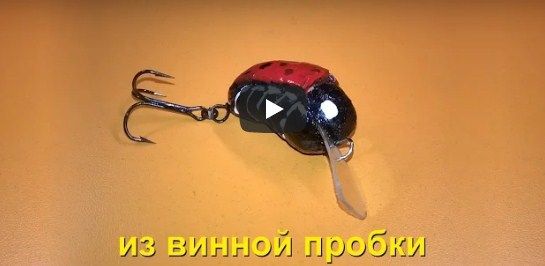
Many fishermen know that the cockchafer is the most sought after delicacy for chub, and for other fish too. The peak activity of these beetles occurs in May and fish at this time wait for them under tree branches, where they fall into the water. But throughout the summer, the bite on this bait continues to be active. Many fishermen simply freeze cockchafers for summer fishing, but there is an easier way - to make long-lasting lures for spinning fishing.
In this instruction we will look at how you can very simply make a wobbler in the shape of a cockchafer from scrap materials. As a basis, the author used an ordinary wine cork, which can be collected in people’s recreation areas. All you need to do is cut out the desired profile and paint the bait, and now it looks like a beetle. For greater detail, it is recommended to equip this bait with legs, like a real beetle. For these purposes, some craftsmen use thin elastic bands from panties, which need to be painted black or brown. In the water they will move and imitate a real beetle. So, let's look in more detail at how to make such a tackle!
Materials and tools used by the author:
List of materials:
- cork from a wine bottle; - a piece of plastic for the blade; — stainless wire 0.8 mm thick; - tee hook; - lead for loading; - Super glue; - a little sawdust; - nail polish.
List of tools:
- hacksaw blade; - sandpaper; - stationery knife.
Bait making process:
Step one. Cutting out the main profile
The most difficult part of manufacturing can be considered cutting out the profile of the bait. In general, there is nothing complicated here, you just need to be patient and work with a stationery knife. The main thing here is not to rush, the knife is very sharp and the material is hard. If you hesitate, you can easily cut your finger or hand.
We will make the profile similar to that of the body of a cockchafer. That is, it is wider in the front and narrower in the back. Take into account the shape of the beetle's wings. Here it is important to find a picture of a cockchafer or even look for a real beetle to see how its body works.
Step two. Grinding
Next, we arm ourselves with sandpaper and carefully process the surface. We need to make all the shapes smooth, grind off sharp corners, and so on. You can work with coarse sandpaper first, and use fine sandpaper at the end. The cork is sanded quite easily, although it quickly clogs the sandpaper.

Step three.
Wings Now we need to cut a line on the back, which will imitate the line where the wings meet. Again, we use a stationery knife as a tool here. You need to work extremely carefully so as not to get hurt.
Step four. Space for weight
You need to install a weight in the belly of the bait. It will be needed so that our beetle floats correctly on the water, that is, belly down, like a real beetle. Just cut out the desired hole for the weight using a knife. We select the weight so that it slightly sinks the beetle.
Step five. Beetle skeleton
For the beetle, it is important to make a “skeleton” to which we will attach the tee. To make it, the author used stainless steel wire 0.8 mm thick. We simply thread it along the bait and make loops at the ends. Subsequently, a tee is installed in the tail section.
Step six. Setting the sinker
The sinker can be installed; it is attached with superglue. Pour some sawdust on top of the weight and fill it with glue. This way we will disguise the weight and secure it additionally. Once the glue is dry, simply sand the area using sandpaper.
Step seven. Blade making
Since our tackle is a wobbler, we need to make a blade for it. Thanks to this blade, the beetle will make movements to the right and left when moving, thereby forming waves on the surface. The frequency of the beetle's movements should be high for better imitation. To make the blade you will need a piece of sheet plastic; the author cut it from a plastic bottle with scissors. We refine the blade profile with sandpaper.
To install the blade, cut a slit in the front of the bait and then glue it in place using superglue. Don't forget to make a cut under the loop in the blade. That's all, technically our bait is ready, all that remains is to paint it.
Step eight. Coloring the bait
To color the bait, the author used nail polish. We make the beetle's abdomen black and its wings brown. Next, you need to apply white stripes and dots on the abdomen, like a real beetle. Be sure to draw the beetle and eyes. The author also used a needle to draw a black dividing line between the wings.
After painting the beetle, it is advisable to cover it entirely with clear varnish to protect the paint.
I hope you liked the project and gave you some ideas. Good luck and creative inspiration. Do not forget to unsubscribe if you manage to catch something with such bait. Don't forget to share your experiences and observations with us!
Source
Become the author of the site, publish your own articles, descriptions of homemade products and pay for the text. Read more here.
Overview of the work and an example of making a cockchafer on video
In the first picture we see a cluster of wobblers from this master. This is exactly how much I purchased for the experiment (test). I was prompted to make this purchase by a video on YouTube, in which he showed how this bait works and, which surprised me, completely revealed the production technology. I suggest you watch the video first, and then we will continue analyzing the order received.
From the first minutes of the video it becomes clear that the bait is working and will give a head start to many analogues of wobblers for catching chub with a slap. As for the version with a spatula, it is difficult for me to judge its prospects without conducting field tests.
